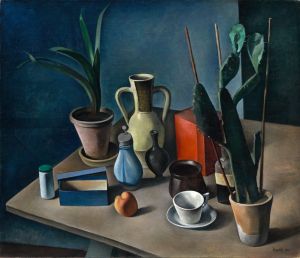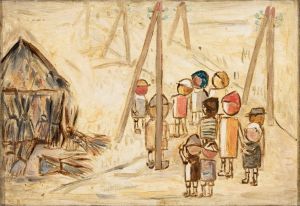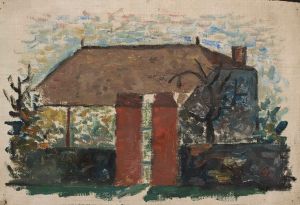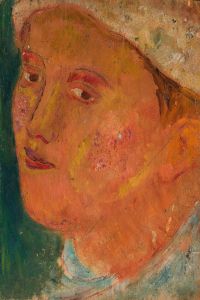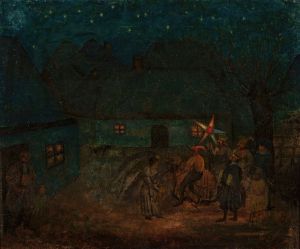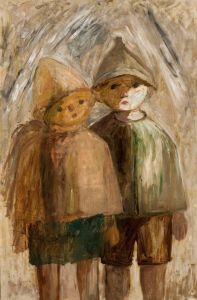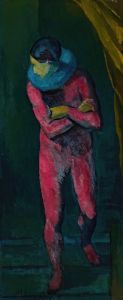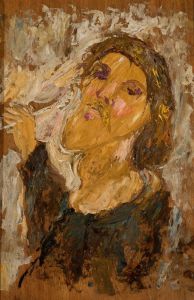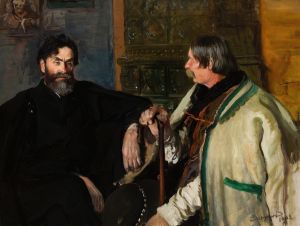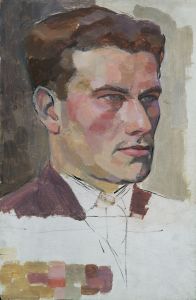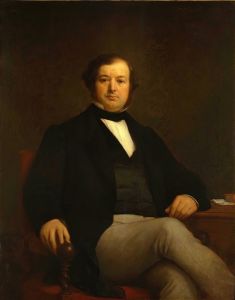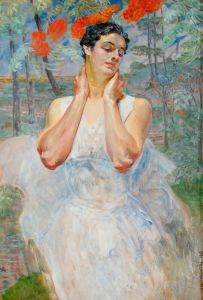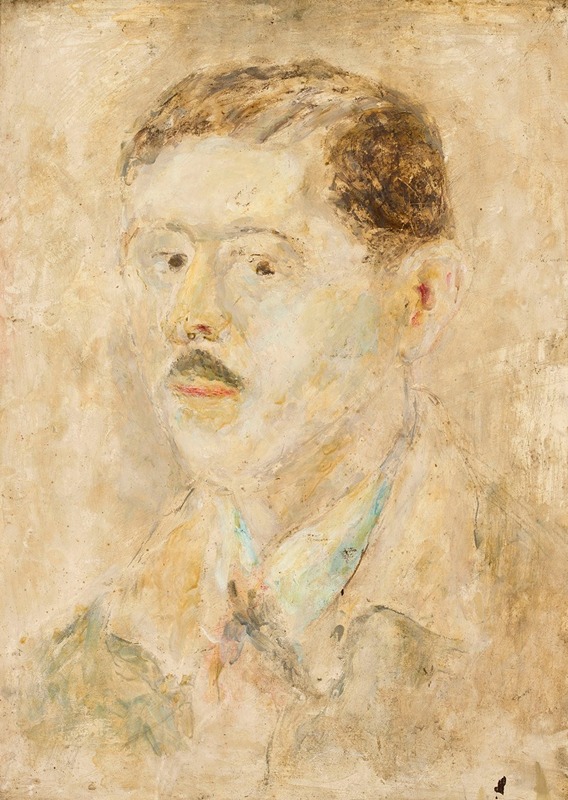
Portret męski
A hand-painted replica of Tadeusz Makowski’s masterpiece Portret męski, meticulously crafted by professional artists to capture the true essence of the original. Each piece is created with museum-quality canvas and rare mineral pigments, carefully painted by experienced artists with delicate brushstrokes and rich, layered colors to perfectly recreate the texture of the original artwork. Unlike machine-printed reproductions, this hand-painted version brings the painting to life, infused with the artist’s emotions and skill in every stroke. Whether for personal collection or home decoration, it instantly elevates the artistic atmosphere of any space.
Tadeusz Makowski (1882–1932) was a Polish painter known for his distinctive style that combined elements of modernism with influences from folk art and primitivism. He spent much of his career in France, where he developed his artistic voice and became associated with the École de Paris. Makowski’s works often depicted scenes of everyday life, children, and figures rendered in a simplified, geometric style that reflected his interest in Cubism and his personal interpretation of form and color.
"Portret męski" (translated as "Male Portrait") is one of Makowski’s paintings, though detailed information about this specific work is limited. Like many of his portraits, it likely reflects his characteristic approach to composition, emphasizing simplicity and emotional depth. Makowski’s portraits often avoided excessive detail, focusing instead on the essence of the subject through geometric shapes and muted tones. His works are celebrated for their introspective quality and their ability to convey a sense of humanity and sincerity.
Makowski’s artistic career was shaped by his studies at the Academy of Fine Arts in Kraków, where he was influenced by the Young Poland movement. After moving to Paris in 1908, he encountered the works of modernist artists such as Pablo Picasso and Georges Braque, which inspired him to experiment with Cubism. Over time, he developed a more personal style that blended these modernist influences with a nostalgic connection to Polish folk traditions.
"Portret męski" is housed in the National Museum in Warsaw, Poland, which holds a significant collection of Makowski’s works. The museum’s collection provides insight into the artist’s evolving style and his contributions to early 20th-century art. While specific details about the subject or context of "Portret męski" are not readily available, the painting is representative of Makowski’s broader oeuvre, which is characterized by its emotional resonance and innovative use of form.
Makowski’s legacy as an artist lies in his ability to bridge the gap between modernist experimentation and the timeless qualities of folk art. His works continue to be studied and appreciated for their unique perspective and their role in the development of Polish and European modern art.





